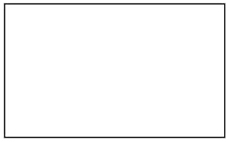|
Cylinder:
Student Worksheet
Name: ____________________________________

If you compare three different
cylinders, how can you tell which one will have the greatest volume?

Students work in individually
or in pairs

- 3 sheets of paper with
rectangles A, B, and C
- rulers
- tape
- scissors

- Cut out the rectangles
shown on the attached pages. Tape them together on the sides indicated
to form cylinders.


- Answer the following questions:
- If the cylinders
had tops, what would be the diameter of each top?
- What would be the
radius of each top?
- What would be the
area of each top? Round to the nearest tenth.
- For the area of the
tops, find A : B and A : C.
- Measure the heights of
the three cylinders. For the heights, find:
- A : B ____________
- A : C ____________
- Predict the ratio of the
volumes of the following cylinders:
- A and B __________
- A and C __________
- Find the volume of each
cylinder. For the volumes, find:
- A : B ___________
- A : C ___________
- Were your predictions
in Question 4 correct?
- Summarize:
- If the height
of two cylinders is the same and the radii are in ratio of __?__,
then their volumes are in the ratio of __?__.
- If the radius of two
cylinders is the same and the heights are in ratio of __?__, then
their volumes are in the ratio of __?__.

As a result of this activity,
students will be able to model how the changes of a figure in such
dimensions as length, width, height, or radius affect other measurements
such as perimeter, area, surface area, or volume.
|